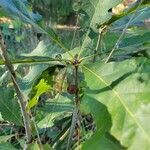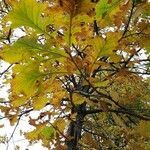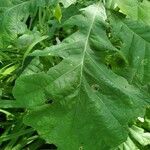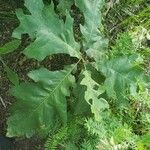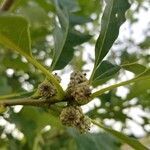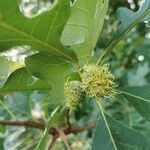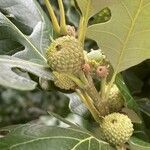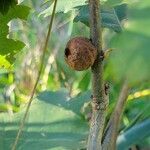A deciduous tree. It grows to 15-40 m high. The trunk is 60 cm across. The leaves are 15-30 cm long. The shape varies. There can be 7-9 deep lobes but also less. The leaves are shiny green on the upper surface and pale and hairy underneath. The acorns are 20-30 mm long. They usually occur singly. The cup is large and encloses half or more of the acorn. There is a fringe near the acorn.
